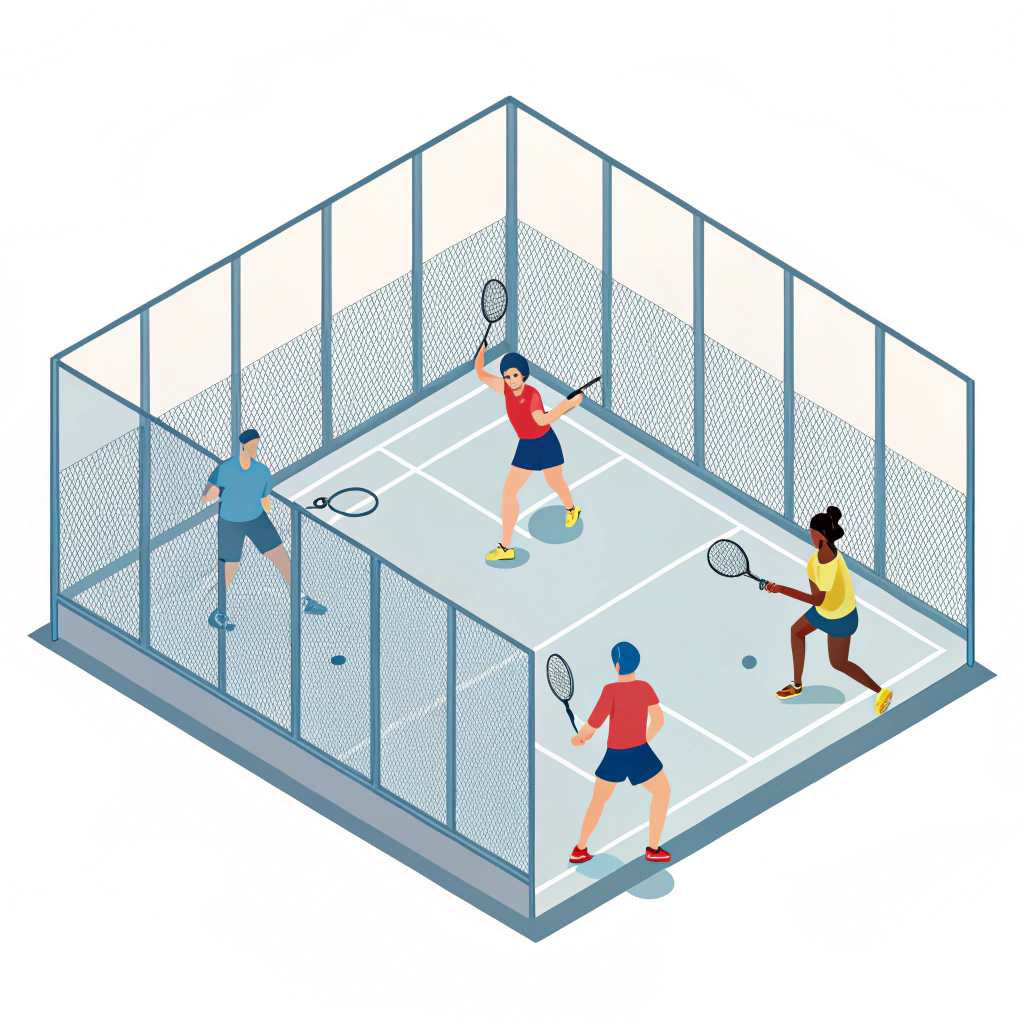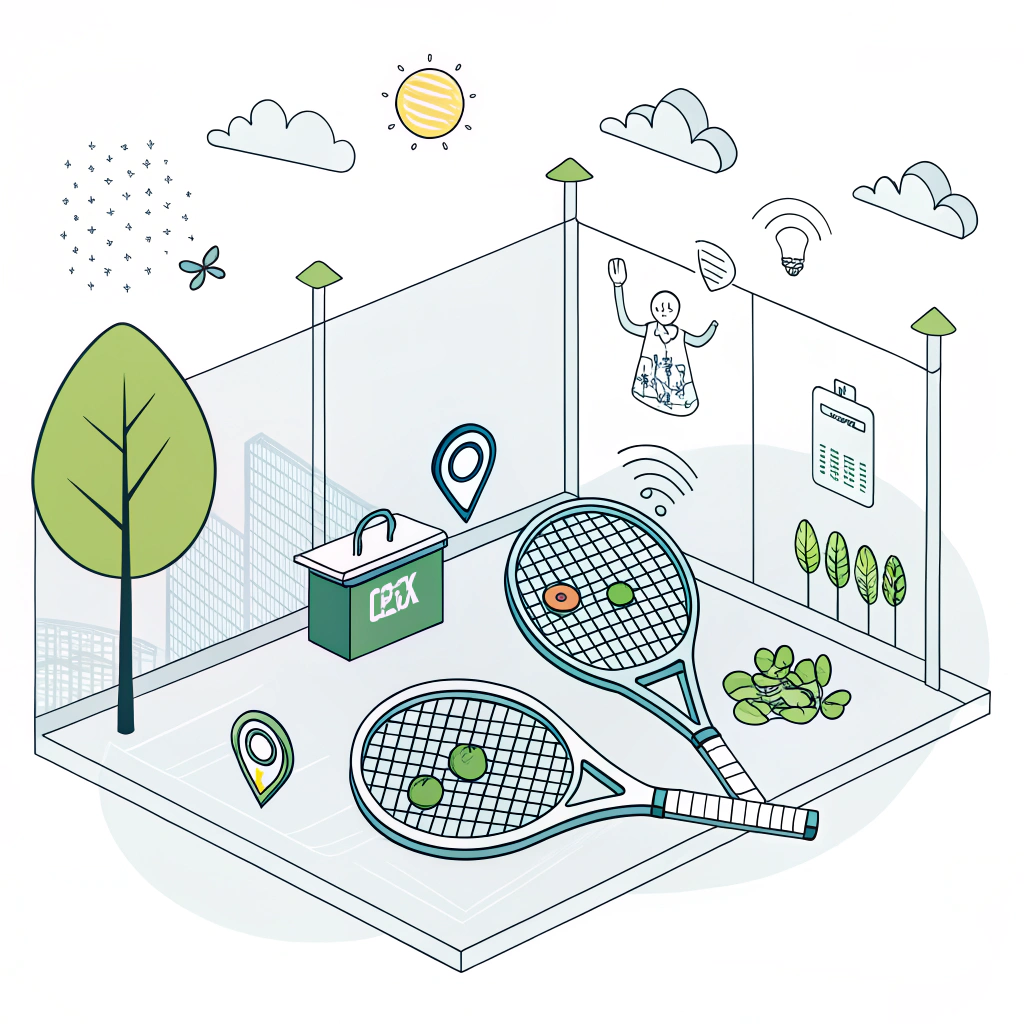Padel is a fast-growing sport that combines elements of tennis and squash, emerging worldwide as a major opportunity for sports retailers and manufacturers. In this article, we explore the factors driving its popularity, the necessary innovations in equipment manufacturing, and how manufacturers like NEX Padel are poised to support businesses in this exciting market.
Padel has experienced explosive growth in recent years, driven by its accessibility, fast-paced action, and social appeal. As a sport that encourages mixed-age participation, padel sport offers a unique market opportunity for sports retail and equipment manufacturers. This article will cover the current trends, technical advancements in padel equipment, and how savvy procurement managers can meet the rising demand with high-performance solutions.
Padel is not just another racket sport. It has carved out its niche through several compelling advantages:
- Fast-paced gameplay: Padel courts are smaller and enclosed, supporting dynamic and spirited matches.
- Social appeal: The sport caters to a diverse age range, making it a family-friendly and community-building activity.
- Accessibility: Simple rules and minimal equipment requirements lower the barriers to entry, rapidly broadening its participant base.
While the sport is called padel in the U.S., it is known as paddle in many other parts of the world. This dual terminology highlights cultural nuances and market segmentation that B2B buyers must consider when expanding their inventory.
The growth of padel has also been influenced by modern court designs and specialized equipment that enhance safety and performance. Manufacturers have embraced innovations like advanced carbon fiber technologies1 and customized production techniques to deliver rackets that meet various performance levels. NEX Padel, for instance, excels in employing techniques ranging from fiberglass to 3k, 12k, and 18k carbon fiber production, ensuring precision and durability.
To better understand the market dynamics, consider the following trends that are shaping the padel industry:
Padel has seen a surge in popularity, especially in Europe and Latin America, where courts are being built in public parks, clubs, and even urban centers. Several factors contribute to this trend:
- Community integration: Padel courts foster a sense of community and active engagement.
- Low learning curve: The sport’s ease of entry makes it attractive to players of all skill levels.
- Social media influence: High-profile players and tournaments are driving awareness and participation.
Investments in advanced production techniques are critical in meeting the needs of high-performance athletes and recreational players alike. Manufacturers like NEX Padel use state-of-the-art processes to ensure that each padel racket delivers optimal performance. Key production techniques include:
- Material versatility: Options range from traditional fiberglass to advanced carbon fiber materials such as 3k, 12k, and 18k carbon.
- Rapid prototyping2 and timely delivery help businesses quickly respond to market trends and consumer needs.
- In the table below, note how Customization Options3 and optimized supply chain4 play a pivotal role in meeting diverse market demands.
| Production Aspect | Technique/Material | Benefits | Application in Padel Equipment |
|---|---|---|---|
| Material Selection | Fiberglass, 3k, 12k, 18k carbon fiber | Offers a range from flexibility to high stiffness | Enables customization of paddle performance for different play styles |
| Customization Options3 | Custom shapes, prints, logo on hand grips | Enhances brand identity and player personalization | Supports exclusive designs for B2B partners and end-users |
| Production Speed | Rapid prototyping2, optimized supply chain4 | Faster time-to-market, efficient inventory management | Ensures timely order fulfillment and market responsiveness |
The integration of these production advancements in padel equipment not only enhances the product performance but also reinforces the brand's reputation as a partner that delivers excellence to its B2B clients.
While padel's growth is undeniable, there are still challenges in certain markets, particularly in the United States. The lack of standardized courts and necessary infrastructure can hamper immediate widespread adoption. A few points to consider:
- Court setup requirements: Padel requires an enclosed court design with glass walls, which differs from traditional tennis courts.
- Consumer awareness: Limited knowledge about the sport may delay investments in specialized equipment.
- Regulatory and urban planning issues: Existing sports facilities may need retrofitting to meet padel specifications.
Despite these hurdles, market trends indicate that as infrastructure catches up, the overall demand for high-performance padel equipment will continue to rise.
As the demand for innovative sports equipment increases, manufacturers are continually seeking methods to improve both product quality and production efficiency. Let’s break down some of the technical insights and manufacturing strategies worth considering:
| Production Aspect | Technique/Material | Benefits | Application in Padel Equipment |
|---|---|---|---|
| Material Selection | Fiberglass, 3k, 12k, 18k carbon fiber | Offers a range from flexibility to high stiffness | Enables customization of paddle performance for different play styles |
| Customization Options3 | Custom shapes, prints, logo on hand grips | Enhances brand identity and player personalization | Supports exclusive designs for B2B partners and end-users |
| Production Speed | Rapid prototyping2, optimized supply chain4 | Faster time-to-market, efficient inventory management | Ensures timely order fulfillment and market responsiveness |
The table above summarizes how modern manufacturing not only increases product quality but also strengthens the business case for partnering with innovative suppliers like NEX Padel.
For procurement managers and business development executives, aligning with a reliable manufacturer is key to gaining a competitive edge. Here’s why investing in high-performance padel equipment is crucial:
The modern padel player demands not only performance but also aesthetic appeal and customization options. High-performance rackets with enhanced durability, better control, and advanced design features can significantly elevate player engagement and satisfaction.
Innovation in materials and manufacturing processes translates to better product performance and longer product life-cycles. This advantage helps reduce warranty costs and establish stronger customer relationships. Companies like NEX Padel are at the forefront, ensuring that their manufacturing techniques meet the demands of high-tier competitive markets and recreational players alike.
Aligning with industry leaders who deliver quality consistent performance adds credibility to your brand portfolio. By sourcing equipment from trusted manufacturers with a track record of excellence, businesses can position themselves as leaders in sports innovation.
Padel is not confined to rackets alone. A comprehensive approach to the sport involves equipping courts, ball supplies, and associated gear. Manufacturers capable of delivering a full suite of high-quality products reduce the procurement hassle of dealing with multiple suppliers, streamlining the supply chain and often reducing costs.
When considering high-performance padel equipment for your business, keep the following factors in mind:
-
Material Quality: Ensure the products use advanced materials like high-grade carbon fibers. This guarantees durability, performance, and consistency across production runs.
-
Customization: Look for manufacturers who offer customization options in product shapes, printing, and accessory options. This flexibility helps cater to the specific needs of different markets and consumer segments.
-
Production Lead Time: A manufacturer with rapid prototyping2 and streamlined production processes can fulfill orders quickly, a critical factor in maintaining constant supply amid fluctuating market demands.
-
Certifications and Quality Control: Reliable manufacturers maintain strict quality control standards and possess relevant certifications, ensuring that each product meets international standards.
-
Partnership Track Record: Collaborations with well-known brands (e.g., Hirostar, Reebok, and Starvie) are indicative of a manufacturer's reliability and market reputation. Their track record offers reassurance about production consistency and service quality.
Integrating these criteria into your procurement decisions can lead to more resilient supply chains and a competitive edge in the evolving sports market.
Looking ahead, several trends are expected to shape the padel industry:
- Increased Digital Integration: Manufacturers are likely to implement digital tools for quality control and supply chain management. Smart manufacturing processes could lead to even more transparent and efficient production cycles.
- Sustainable Practices: As environmental concerns grow, sustainable production methods5 and eco-friendly materials may become a critical competitive factor.
- Global Expansion: With the sport gaining traction in regions like North America, companies that successfully navigate infrastructure challenges will find considerable market opportunities.
- Product Innovation: The continuous search for better performance has spurred innovation in racket design and materials. Future products may feature even lighter and stronger compositions, further enhancing player performance.
For procurement managers, these trends not only highlight the evolving technical landscape but also the broader market potential of high-performance padel equipment. Partnerships with innovative manufacturers like NEX Padel provide the dual advantage of quality production and market adaptability, positioning businesses for future growth.
Padel represents a unique and rapidly expanding segment within the sports market, offering both exciting opportunities and specific challenges. The sport's growing global appeal, combined with technological advancements in equipment production, makes it a promising area for B2B buyers looking to diversify or upgrade their portfolios.
To capitalize on this trend, consider the following actionable steps:
- Evaluate your current product portfolio and determine how an integrated line of padel equipment might add value.
- Understand the infrastructure requirements in your target markets and align your product offerings accordingly.
- Partner with manufacturers that prioritize quality, rapid production, and customization to ensure you can meet the evolving demands of padel enthusiasts.
- Keep abreast of technological advances and market trends by engaging with industry experts and leveraging real-time data to inform your procurement strategy.
By adopting these insights, businesses can not only facilitate smoother market entry but also establish themselves as forward-thinking leaders in the sports equipment sector. The ability to identify and integrate industry innovations is integral to staying competitive as consumer demands continue to evolve.
Q: What is padel called in the US?
A: Although the sport is widely known as padel in the United States, in most parts of the world it is referred to as paddle. This terminology difference highlights the regional nuances in the sport's branding and market strategy.
Q: Why padel is not popular in the US?
A: One key reason behind padel's slower adoption in the U.S. is the lack of dedicated courts and supporting infrastructure. Without the necessary facilities, the sport's unique court setup—which requires glass walls and specific dimensions—remains less accessible.
Q: Why is padel so famous?
A: Padel's popularity stems from its fast pace, social nature, and accessibility. Played on a compact, enclosed court, the sport appeals to players of all ages and skill levels, making it one of the fastest growing sports globally.
-
advanced carbon fiber technologies: Click to explore innovations in carbon fiber that enhance equipment performance and durability, offering insights into materials engineering for sports products. ↩ ↩
-
rapid prototyping: Click to learn how rapid prototyping accelerates production and helps manufacturers quickly bring innovative sports equipment to market. ↩ ↩ ↩2 ↩3 ↩4
-
Customization Options: Click to understand the importance of customization in sports equipment, enabling tailored solutions that meet diverse consumer preferences. ↩ ↩ ↩2 ↩3
-
optimized supply chain: Click to delve into strategies for supply chain optimization that improve efficiency and responsiveness in equipment manufacturing. ↩ ↩ ↩2 ↩3
-
sustainable production methods: Click to discover sustainable production practices and eco-friendly materials that are reshaping the sports equipment industry. ↩ ↩







